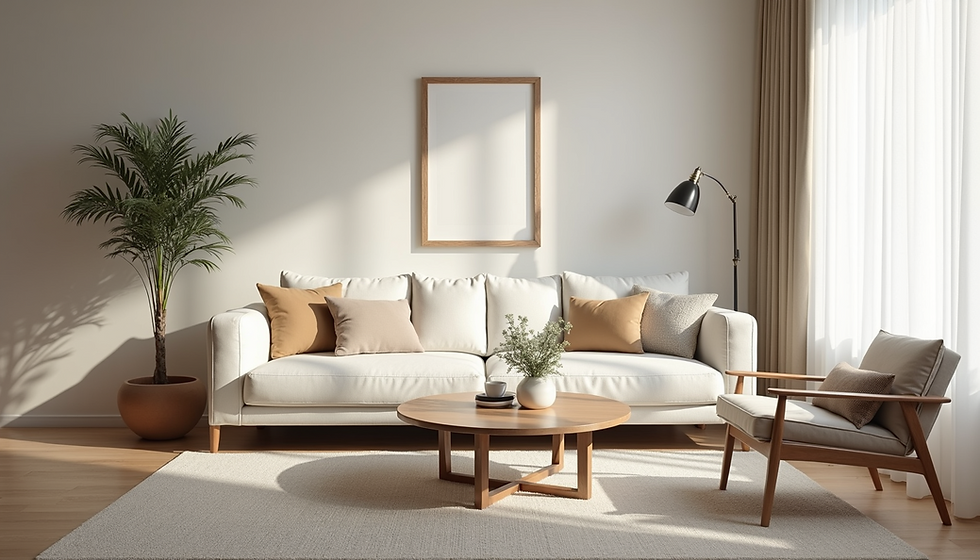How to Embrace Neurodesign Principles in The Learning Center for Senior Living : Architecture That Enhance Wellbeing
- CoCo Design

- Jun 23
- 3 min read
In the world of senior living architecture, Neurodesign is becoming a transformative force. This innovative approach uses insights from neuroscience to shape environments that uplift the mental health of older adults. With a growing senior population—expected to reach 94.7 million by 2060—there is an urgent need for living spaces that foster psychological well-being and improve quality of life.
It’s essential to understand how our surroundings affect our thoughts and feelings. This guide explores practical ways to integrate neurodesign principles into senior living architecture, ensuring that these spaces are not just livable but genuinely nurturing.
Understanding Neurodesign
Neurodesign is about applying findings from neuroscience to architecture and design. It examines how different elements—like spatial arrangements, lighting, colors, and textures—impact brain activity and emotional well-being.
Older adults often deal with cognitive challenges and emotional struggles. Using neurodesign principles, architects can create environments that promote mental clarity and emotional stability. This could manifest in designs that encourage social connections, support physical activity, and offer spaces for relaxation.
Key Principles of Neurodesign in The Learning Center for Senior Living
Biophilic Design
Biophilic design taps into the essential human connection to nature. Including elements such as plants, water features, and plentiful natural light can significantly boost mood and cognitive performance. For instance, studies show that spending time in natural settings can improve attention by up to 20% and lower stress levels.
The Purpose of Learning Center for Senior Living is to implement biophilic design, consider layouts that incorporate abundant green spaces, views of the outdoors, and elements like indoor gardens. These features help residents feel connected to nature, improving their overall quality of life.

Cognitive Accessibility
Cognitive accessibility is vital for accommodating the diverse mental abilities of seniors. Designing spaces with clear visual cues, easy-to-read signs, and familiar layouts can reduce confusion and minimize anxiety.
A study found that well-designed navigable spaces can enhance residents' sense of control and independence. Keep pathways logical and signage intuitive, making daily navigation a stress-free experience.
Social Interaction Spaces
Fostering social connections is critical in senior living. Spaces should be designed to encourage interaction among residents. This can be achieved with communal dining areas, lounges, and activity rooms that promote engagement.
Open layouts eliminate barriers to conversation, while comfortably arranged furniture invites interaction. Additionally, having flexible areas that can be used for group activities or quiet relaxation adds versatility to the living environment.

Importance of Lighting in Neurodesign
Lighting is a crucial element in senior living design. While natural light is ideal, the design of artificial lighting is equally important. Proper lighting sets the mood, regulates sleep patterns, and can improve well-being.
Use warm, ambient lighting in shared areas to create welcoming environments. Residents' private spaces should offer both task lighting for reading and softer ambient options for relaxation. Adjustable lighting that adapts to individual comfort levels can greatly enhance everyone’s living experience.
Color Psychology in Senior Living Spaces
Colors can profoundly affect behavior and mood. Bright colors can stimulate energy and creativity, while softer hues often foster calmness. Achieving a balance in color schemes is essential for creating an inviting atmosphere.
For example, using warm neutrals in bedrooms promotes comfort and peace, while bright colors in communal spaces can energize and engage residents. Choosing colors based on their psychological effects can lead to our desired emotional atmosphere.
Integration of Technology in Neurodesign
With rapid advancements in technology, integrating smart solutions into senior living design can enhance residents' well-being. Technologies, like automated lighting and health monitoring sensors, support independence and safety.
Moreover, virtual reality tools can help combat loneliness by providing engaging experiences and activities. Understanding how technology integrates within neurodesign allows for modern living spaces that prioritize well-being.
Final Thoughts
Incorporating neurodesign principles in senior living architecture is not merely a trend; it is key to improving the quality of life for seniors. By focusing on biophilic design, prioritizing cognitive accessibility, encouraging social interactions, and being mindful of lighting and color psychology, we can create meaningful environments.
As the field evolves, using neuroscience in design will lead to a future that emphasizes mental and emotional well-being. This is a pivotal moment to redefine senior living and to develop spaces that honor the dignity and vibrancy of their residents.
By placing neurodesign at the forefront, we can create inviting and supportive environments that positively impact the happiness and health of older adults. Let's embrace this opportunity to design for well-being and make a lasting difference in the lives of seniors.



Comments